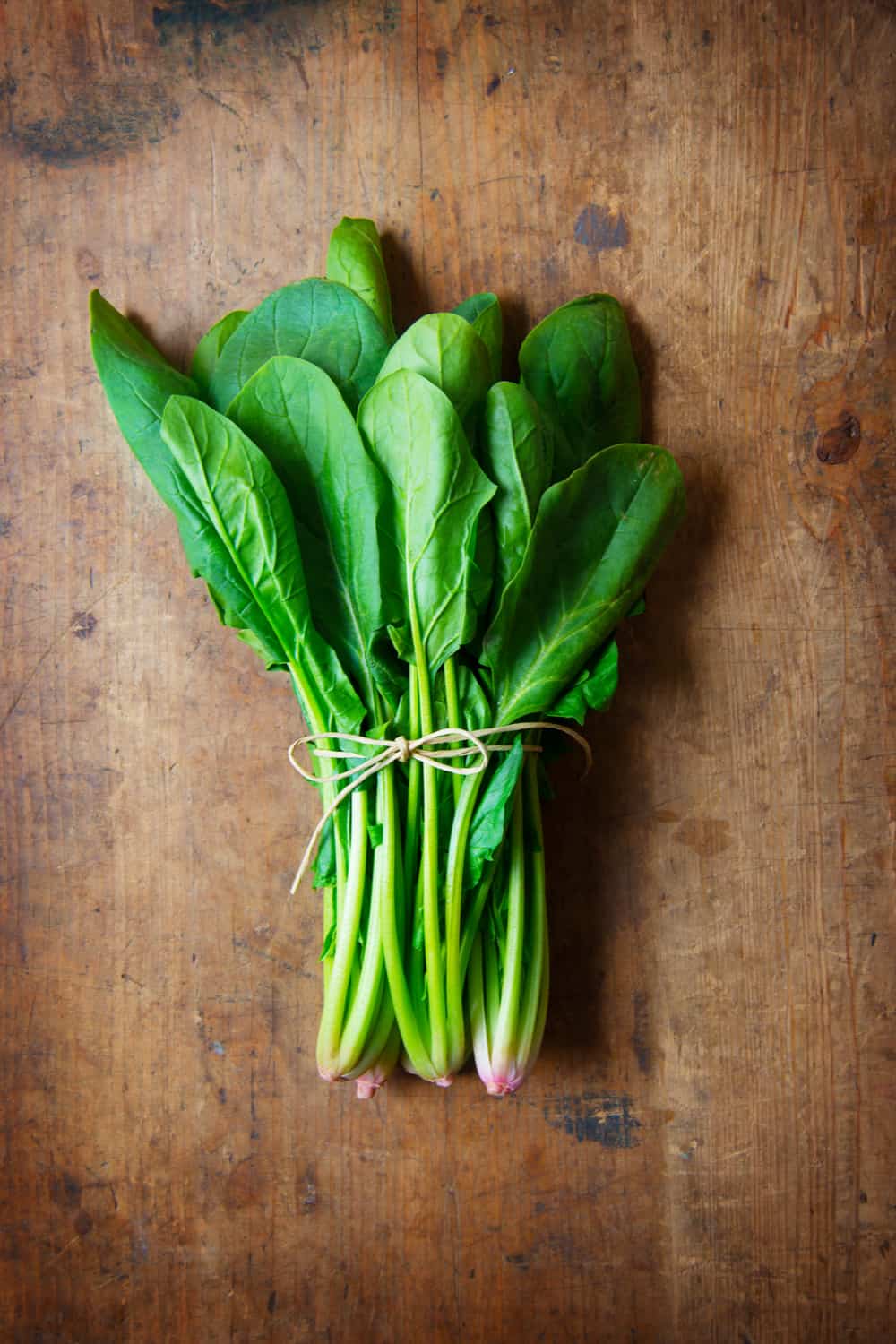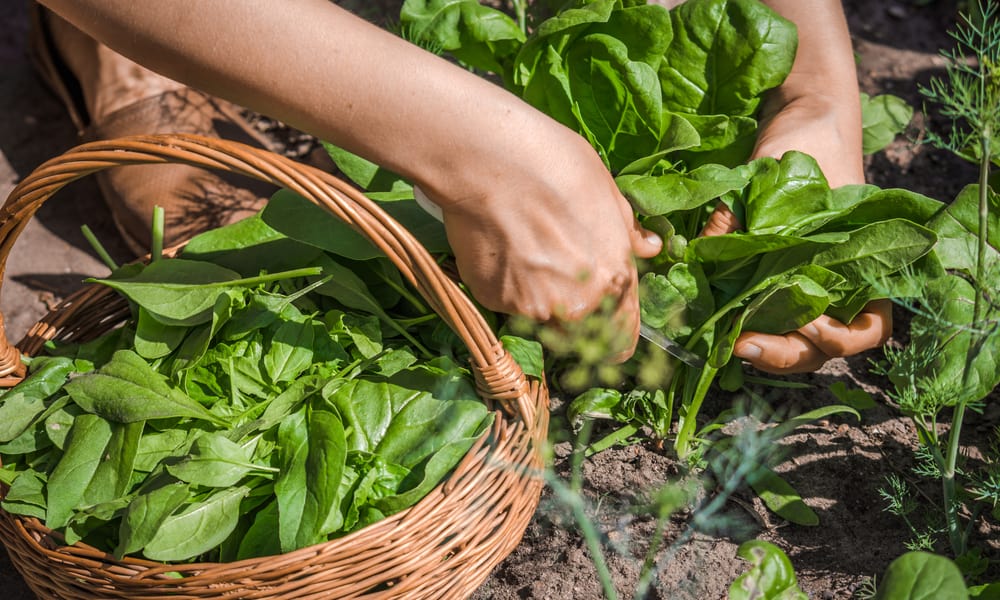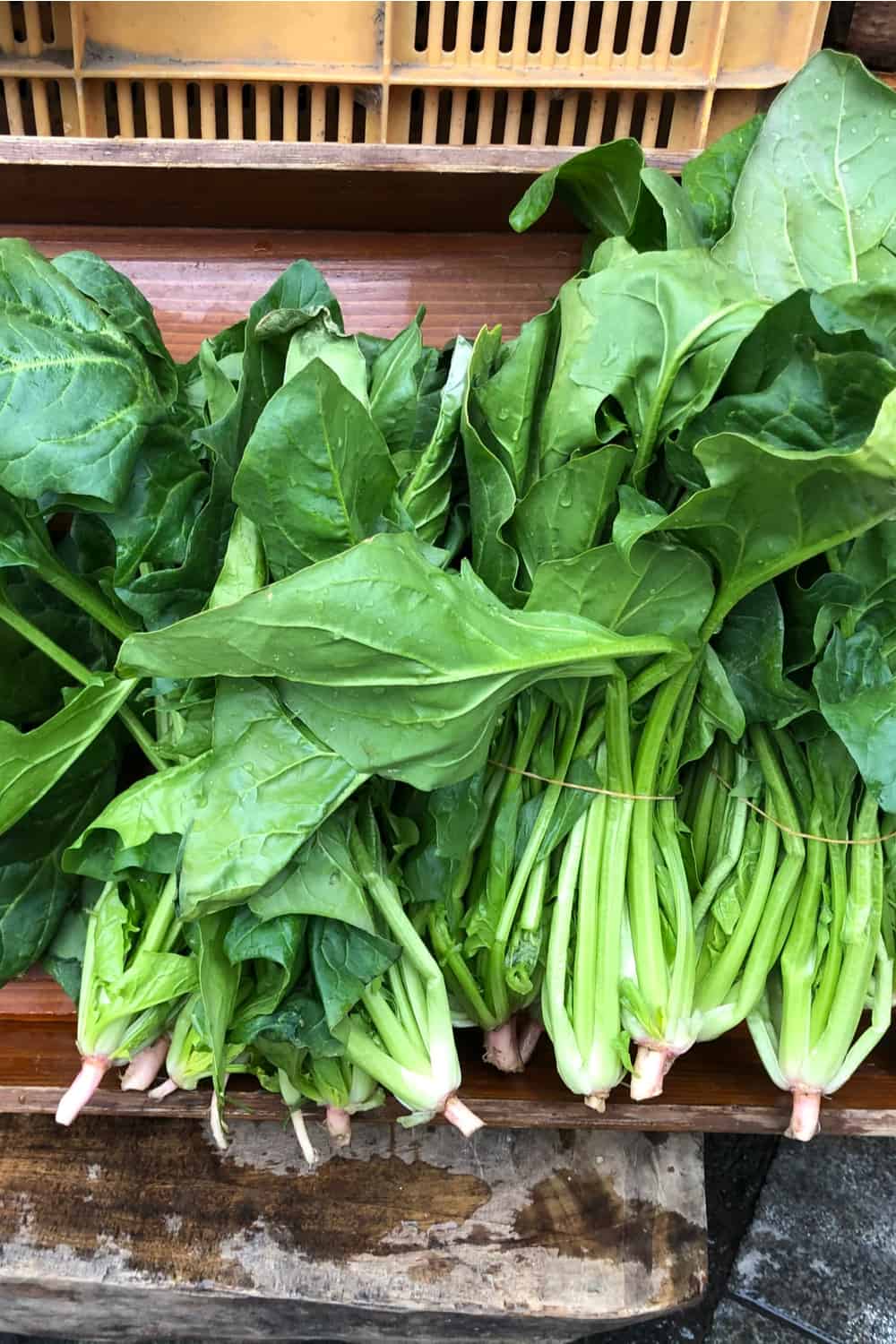
Spinach is a highly healthy leafy vegetable full of valuable nutrients you should intake during its season. The questions are does spinach go bad and how long does spinach last. It depends on a few factors, including its quality and way of storing. Let’s discuss the issue in detail.
Table of Contents
Does Spinach Go Bad?

The shelf life of this popular leafy veggie will depend on a few crucial factors, including:
- The best by date or purchased date
- The preparation method
- The way of storing
- How long you store it
Spinach is easily perishable, but the problem is in decreasing its nutritional values over time. Basically, these leaves will rot eventually regardless of the storing method used. Once it becomes rot, you will know it, I promise you.
Therefore, the best option is to consume this vegetable fresh and as soon as possible. However, it doesn’t mean your spinach is bad just because you keep it in storage for a few days.
If you are aware that you can’t use all spinach you have bought, you can blanch or cook it and prolong its shelf life for a while. The vital thing is to determine the amount you need for a week and purchase not much more than that. It is the only way to be sure that this veggie is healthy, nutritious, and fresh.
How Long Does Spinach Last?

It is impossible to determine how long spinach exactly lasts, but it won’t stay fresh for more than a few days when you store it in the fridge. Fresh spinach you can buy in the farmer’s market is sometimes edible for a week or even two.
On the other hand, the one bought in the market will probably start to lose quality four to five days after the best-by date if the bag is opened. An unopened bag will protect leaves, so you can probably use them for a week after the date printed on the label.
spinach shelf life |
||
| Spinach | Fridge |
Freezer |
|
Fresh |
5 to 7 days | 6 months |
| Unopened | 7 days |
Up to a year |
|
Opened |
3 to 5 days | 6 months |
| Cooked | 4 to 5 days |
6 to 12 months |
|
Blanched spinach |
Up to 5 days | 10 to 12 months |
| Puree | Up to 5 days |
10 to 12 months |
You can prolong this veggie shelf life by blanching or preparing puree and juice. There is always an option to freeze fresh leaves and use them when needed within a year. Unfortunately, its taste won’t be the same after thawing, so you can use it only for cooking or making a smoothie.
Tips to Tell if Spinach Has Gone Bad
Pre-packaged spinach leaves always come with an expiration date, so you should check them before buying this product. Your goal is to keep it fresh as long as possible.
Poorly stored spinach will quickly start decaying, primarily because of the high moisture level. The most common signs of spinach leaf spoilage include:
Color
Fresh spinach leaves are vibrant green, and their darkening is the first sign that something is wrong. They become dark green in the beginning and then turn black.
In some cases, leaves will dry and become whitish or yellowish-brown with dark spots. Such spinach is unpalatable, so you shouldn’t use it to prepare a meal.
You can save most of your vegetables if you notice discoloration on time. After removing affected leaves, use the rest as soon as possible.
Smell
Moist and rotten spinach starts smelling strong, sour, and unpleasantly, sometimes even moldy.
Texture
Once your spinach losses of crispness and you see its leaves’ texture changes, it is a moment to throw it away. In most cases, you will see:
- Slimy or sticky leaves – The most frequent change on spinach, especially baby spinach leaves, is sliminess. They also become sticky to the touch.
- Shriveled leaves – When leaves become shriveled with torn, blackened, and frayed edges, you should know that your veggie will expire soon.
- Wilted leaves – This change is always a sign that your spinach is too old and probably inadequate for consumption.
- Holes in leaves – If you have old spinach, you will notice holes in its leaves after a while. Since the stalks are probably also dried and discolored, the only option is to get rid of this vegetable.
Tips to Store Spinach
The rule of thumb is to buy the crispiest, brightest, and greenest fresh spinach you can find if you plan to store it for a while. Avoid veggies with dry or discolored stalks.
If you prefer pre-packed spinach, store it in the original unopened packaging until use. You should know that these bags are filled with protective gasses that will keep veggies fresh for a long. Now, let’s see how to store your spinach in the best possible way.
FRIDGE
- Fresh spinach
The best way to keep spinach fresh for long is to store it in the fridge at a temperature below 40 F (4.5 C). Put it in the vegetable drawer and keep it as dry as possible.
Avoid washing this vegetable before the moment you are ready to use it because added moisture is a suitable surface for bacteria growth, and it accelerates decay.
Basically, you can wash spinach before storing it, but it requires thorough drying, which can be impractical.
Placing this veggie in an airtight plastic container, cling film, or heavy-duty plastic bag is an excellent way to protect it from moisture and possible contaminants. It is wise to place a paper towel on the bottom to absorb excess moisture.
Never keep spinach with apples and bananas since the ethylene they produce causes leafy green veggies premature spoilage.
- Salad spinner
If you prefer washing spinach leaves before use, you can dry them in a salad spinner before storing the package in the fridge. The goal is to remove excess moisture and prolong the vegetable shelf life.
FREEZER
- Fresh spinach
You can keep your spinach for months after freezing it appropriately. Place whole or chopped fresh leaves in a Ziploc bag and store them in the freezer. A better option is to freeze blanched spinach or puree at 0 F (- 18 C) and use it within 10 to 12 months.
- Cooked spinach
Let blanched or cooked spinach cool down before storing it in a Ziploc bag or airtight container in the fridge for about four days. Never keep it with meat or other veggies to prevent cross-contamination and receiving an unpleasant odor.
The Risk of Consuming an Expired Spinach

As always, only fresh vegetable consumption is safe, beneficial, and healthy. Eating old or rotten spinach always poses a health risk because of fast bacteria growth, even when stored at low temperatures.
As a result, you can face even food poisoning, followed by fever, nausea, stomachache, stomach cramps, vomiting, and diarrhea. The only way to use such spinach is to add it to your compost.
Can You Freeze Spinach?
Freezing spinach is a quick way to have it prepared for meals or smoothies whenever you need it. Luckily, freezing won’t significantly affect spinach nutrient value if you use it within the recommended period.
When you store this veggie for more than six months, your spinach will partially lose some vitamins and enzymes, but most of the nutrients will stay intact. In most cases, you will still have nutritional benefits of this product, including enough:
- Dietary antioxidants
- Vitamin C
- Flavonoids
- Carotenoids
- Phytochemicals
- Folate
- Lutein
Let’s discover the best options to freeze spinach you have at your disposal:
Fresh spinach
When storing fresh spinach in the freezer, it will be edible and quality for about a year. The best way is to place spinach leaves in a Ziploc bag or airtight container before storing them in the freezer at 0 F (- 18 C).
It’s up to you to choose if you will store whole leaves or you prefer chopping them first. Keep in mind that chopped leaves will lose their nutrients much faster.
Once you thaw your spinach, you can use it to make green smoothies or prepare dips, soups, and sauces. Unfortunately, it is not the best option for making a salad.
Blanched spinach and puree
The best option to keep spinach nutrients for months is to blanch it or make puree before freezing. Blanching implies boiling spinach in water for about two minutes.
Then, immediately dip them in ice water for four to five minutes. Pack leaves in a Ziploc bag after drying them thoroughly with a paper towel and squeeze the air out before placing the package in the freezer.
Juice
It is an excellent way to store this veggie for a long. Make a juice, pour it in an adequate container, and freeze it. An even better option is to fill an ice tray, freeze juice, and transfer ice cubes in a bag.
Summary
Spinach is tasty leafy veggie most people like to see on their tables. Unfortunately, only fresh vegetable is healthy and nutritious. You can prolong its lifespan by storing it adequately, but not for long. The best option is to use it fresh or within a few days after buying it.